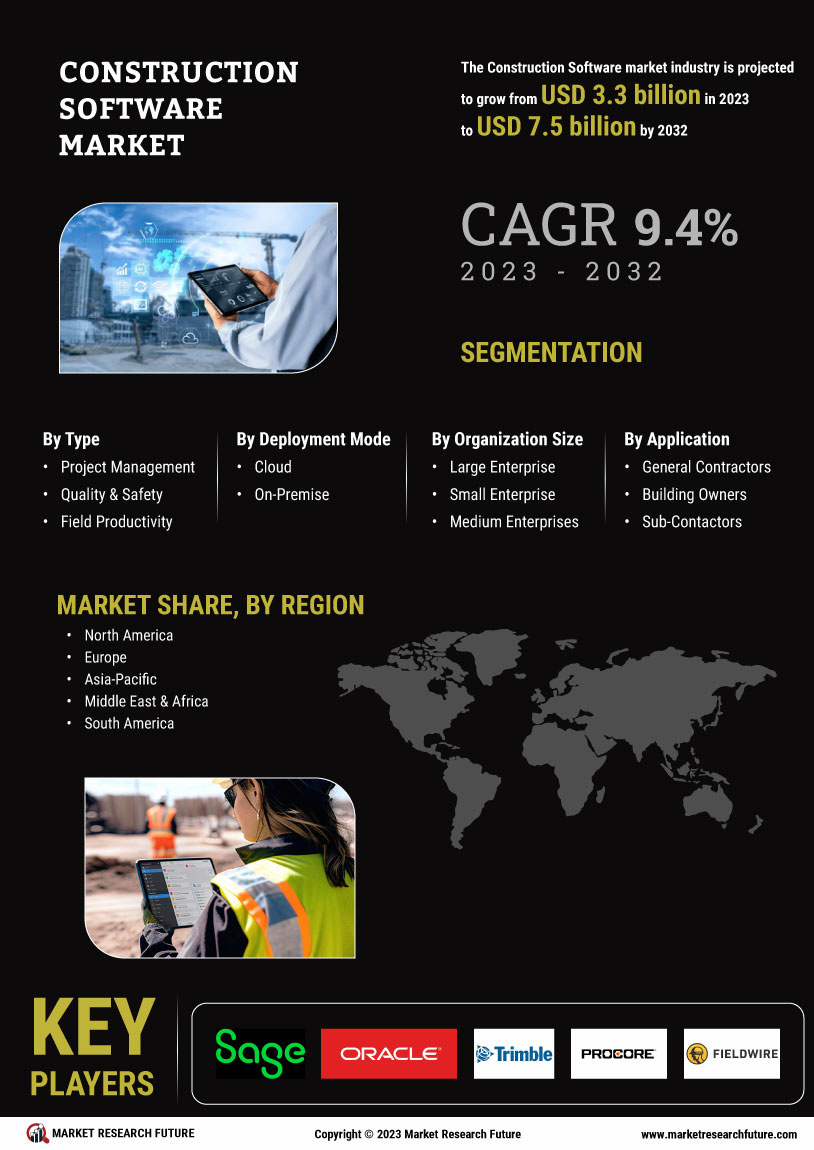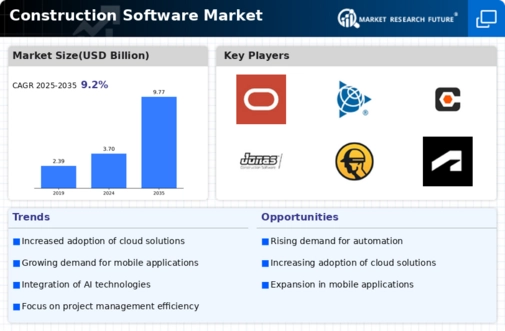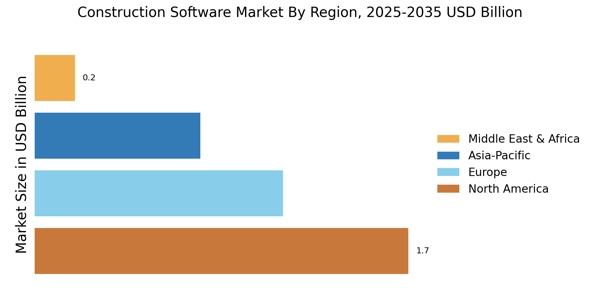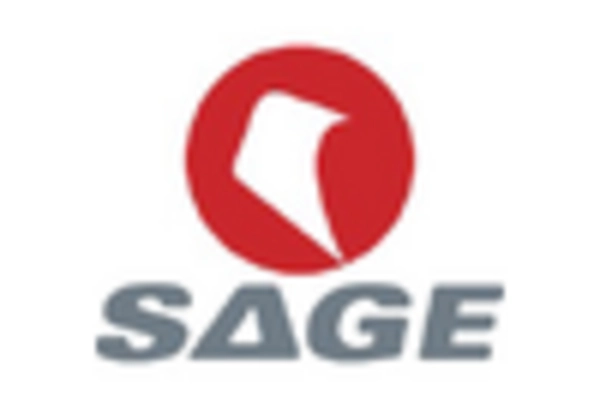Adoption of Mobile Solutions
The Construction Software Market is witnessing a significant shift towards mobile solutions. With the rise of remote work and the need for on-site accessibility, construction professionals increasingly rely on mobile applications to manage tasks, communicate with teams, and access project information in real-time. Data indicates that mobile construction software adoption is expected to increase by over 15% in the coming years. This trend reflects a broader movement towards digital transformation within the industry, as companies recognize the advantages of mobile technology in enhancing productivity and reducing delays. As a result, software providers are focusing on developing user-friendly mobile applications tailored to the unique needs of construction professionals.
Focus on Data Analytics and Reporting
The Construction Software Market is increasingly focusing on data analytics and reporting capabilities. As construction projects generate vast amounts of data, the ability to analyze and interpret this information becomes crucial for informed decision-making. The demand for analytics-driven software solutions is expected to grow by approximately 9% over the next few years. This trend is indicative of a broader shift towards data-driven management practices within the construction sector. Companies are leveraging advanced analytics to identify trends, forecast project outcomes, and enhance operational efficiency. Consequently, software providers are investing in robust analytics features to meet the needs of construction firms seeking to harness the power of data.
Regulatory Compliance and Safety Standards
The Construction Software Market is significantly influenced by the growing emphasis on regulatory compliance and safety standards. As governments and regulatory bodies implement stricter safety regulations, construction firms are compelled to adopt software solutions that facilitate compliance tracking and reporting. The market for compliance management software is projected to expand, with an estimated growth rate of 8% annually. This growth is driven by the necessity for construction companies to mitigate risks associated with non-compliance, which can lead to costly penalties and project delays. Consequently, software solutions that streamline compliance processes are becoming essential tools for construction firms aiming to enhance safety and operational efficiency.
Increased Demand for Project Management Tools
The Construction Software Market experiences a notable surge in demand for project management tools. As construction projects become increasingly complex, stakeholders seek software solutions that enhance collaboration, streamline workflows, and improve overall project visibility. According to recent data, the project management software segment is projected to grow at a compound annual growth rate of approximately 10% over the next five years. This growth is driven by the need for real-time data access and efficient resource allocation, which are critical for meeting project deadlines and budgets. Consequently, construction firms are investing in advanced project management software to optimize their operations and ensure successful project delivery.
Integration of Building Information Modeling (BIM)
The Construction Software Market is increasingly integrating Building Information Modeling (BIM) technologies. BIM allows for the creation of digital representations of physical and functional characteristics of construction projects, facilitating better planning, design, and management. The adoption of BIM software is projected to grow at a rate of 12% annually, as it enhances collaboration among stakeholders and reduces errors during the construction process. This integration not only improves project outcomes but also supports sustainability efforts by optimizing resource use and minimizing waste. As a result, construction firms are prioritizing BIM solutions to remain competitive and meet the evolving demands of the industry.


















Leave a Comment